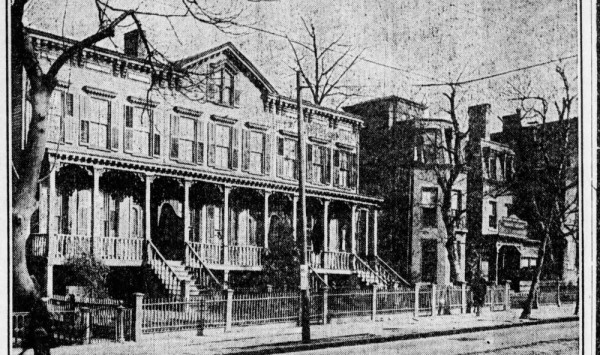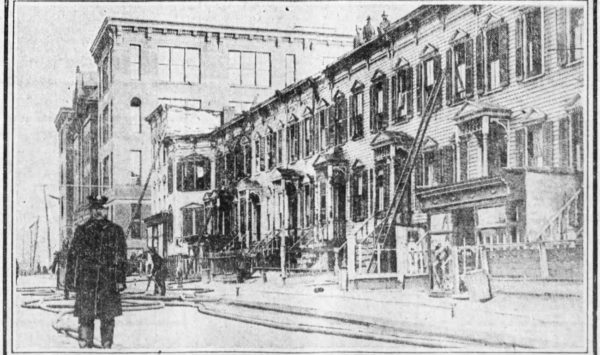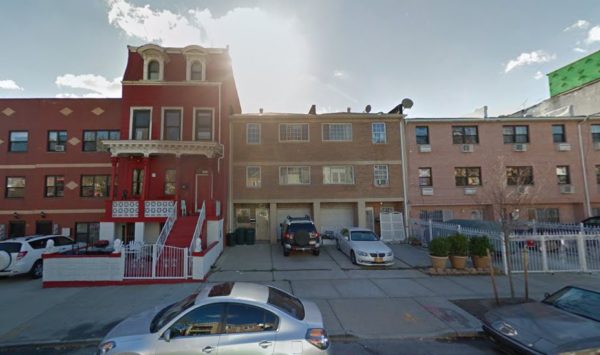A WOOD FRAME DEATH SENTENCE (1914)

******************************************************************************************************************************** Brownstone Detectives investigates the history of our clients’ homes. The story you are about to read was composed from research conducted in the course of one of those investigations. Do you know the history of YOUR house? ******************************************************************************************************************************** Wood frame dwellings were once the norm in Brooklyn. Before a series of laws were enacted in the mid-1800s remanding that houses be constructed of “non-flammable” materials, houses had generally been made of wood. And wooden houses existed everywhere because they were simple to build, cheap in their construction and costs of materials, and their primary element – wood – was everywhere available. As “non-flammable” construction – mostly brick and brownstone – became the norm throughout the borough, these old structures were systematically torn down and replaced with the newer buildings. So, today, when you see a wooden house anywhere in Brooklyn – esp. closer to the city center – you are seeing a rare commodity, as what’s left of these structures is being torn down all around us by developers planning who are building larger and higher-occupancy buildings in their place. Back in 1914, though, people were generally tired of the wood structures – happy to see them meet the wrecking ball to be replaced by brick and mortar. So, no one lifted an eyebrow that year when the Park Slope YMCA purchased three of these type structures – with plans to level them for their new building. THE “Y” BUYS THREE TEAR-DOWNS In late 1914, the YMCA on the […]
WHEN WOOD HOUSES BECAME EXTINCT (1909)

******************************************************************************************************************************** Brownstone Detectives investigates the history of our clients’ homes. The story you are about to read was composed from research conducted in the course of one of those investigations. Do you know the history of YOUR house? ******************************************************************************************************************************** On a cold December day in 1909, on a busy thoroughfare in Brownsville, the lives of hundreds of school children were invariably altered when a row of frame houses adjoining their school began to burn out of control. The flames “shot to the roof and then ran under the cockloft roof of ten two-story frame structures.” “Fanned by high wind, the smoke from the burning structures enveloped the schoolhouse,” noted the Brooklyn Daily Eagle. The school, which no longer exists, sat at one time on the corner of Dumont Avenue and Powell Street – where the Van Dyke II Senior Center now exists. The smoke enveloping P.S. 109, as the school was known, which had “accommodations for five thousand pupils,” had brought their “excited parents” by the dozens who “refused to believe at first that flames were not raging in the building.” “So quickly did the fire eat away through the row of frame houses that many of the inmates had narrow escapes.” That day, the city condemned at least 10 two-family houses which were housing approximately 25 families, making roughly 150 residents instantaneously homeless. EXTENDING THE FIRE LIMITS Advocates for the termination of the building of wood frame houses increased their pleas to city officials to extend the fire limits […]
THE LURE OF A FEDDERS HOUSE (1902)

******************************************************************************************************************************** Brownstone Detectives investigates the history of our clients’ homes. The story you are about to read was composed from research conducted in the course of one of those investigations. Do you know the history of YOUR house? ******************************************************************************************************************************** (In 1868, Quincy Street [between Bedford and Nostrand avenues] boasted of rows of beautiful Victorian wood-frame homes. The row pictured above contained houses like the red building above.) In 1902, luxurious wood frame houses that had been built closer to the middle of the century before were beginning to show their wear – not just in their physical appearances, but also within the rental rolls that such structures had previously been able to command. Since 1868, when the above house (third from left) was built, brownstone and limestone fronted houses had come into vogue, attracting those with means to buy and rent them, while forcing owners of the antiquated frame houses, due to the old issue of supply and demand, to reduce their rents – significantly. “There is a row of three story frame houses on Quincy street, between Bedford and Nostrand avenues which illustrates the demand for houses with a modern style of front,” noted the Brooklyn Daily Eagle. “The Quincy street houses were built in 1868 by a well known architect and builder. They are 20 feet wide on an extra deep lot. The accompanying picture shows the appearance of the houses (no photograph was actually printed with this article). They sold for $9,000 each upon completion. Those who […]